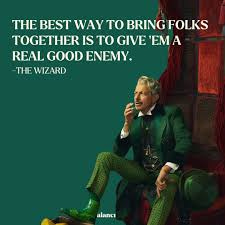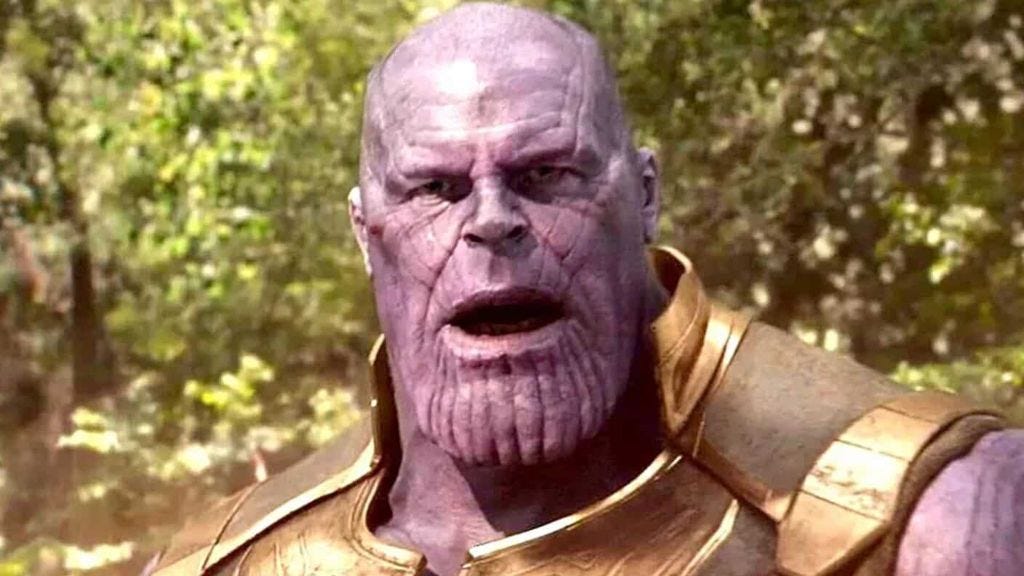A Worthy Adversary
In life as well as storytelling, sometimes the best way to change the outcome is to change the adversary.
What plays a prominent part in every work of literature, is the driving force of every hero’s journey, stars in every single political campaign from every candidate of every party, and is also the thing that keeps you awake at night?
And often looks like Alan Rickman?
It’s the villain, and if we know anything in modern life, we know that you can’t drive a story forward without one. It’s a funny thing about our brains, and about stories: we crave conflict. We long for bad guys. We are obsessed with villains.
To some extent, you can’t blame us: our brains were designed this way. As I’ve written before, we’re five times more likely to remember villainous acts than heroic ones. Because we are a species fueled by fear, we are always scanning the horizon for threats, and our survival as a species depends on our ability to accurately identify the bad guys. Our brains are literally wired to perceive threats more than allies; to see villains more than heroes. And you see that play out in all kinds of ways.
Conflict drives clicks, so media stories obsessively search out villains. Conflict and fear drives donations, so political campaigns obsessively tell us who is the bad guy, who we should fear, who wants to hurt us. If you don’t know me, right now you’re wondering, is she on my team? Who’s she mad at here? If I’m not mad at the same people as you, or if I don’t fight the same battles as you, we must not be on the same team. Right?
We have become defined, in large part, by who we hate.
I’m not making judgments here, I’m just stating science. We are biologically programmed to identify bad guys, and take them down. It’s what makes humanity work! The first gift my brother ever gave my future husband was a book about the Duke-Carolina rivalry: To Hate Like This Is To Be Happy Forever. This is the entire sports industry, writ large: you root for someone, and just as much, you root against someone else.
My mentor and role model, Bill Novelli, is a founding force in the field of social marketing, and he once told me there are three ingredients to a powerful social movement: “You need a worthy cause, a great team, and someone to get mad at.”
Bill is correct. Every social movement, every story, every newsletter needs a really kickass villain to unite the audience, to drive the story forward. That is a deep truth, a scientific and biological fact.
And yet.
In years of writing this newsletter, I have never named an adversary. Am I an incompetent storyteller? Or am I struggling with something else?
United In… Hate?
There’s a funny thing about deep truths: often, the opposite is also true.
Bad guys drive the story forward. But something about our current obsession with bad guys has got me feeling really uneasy. That’s why, for years, I have been avoiding naming an adversary in this Substack.
Whether you call it cancel culture or righteous outrage, all of us are holding pitchforks. And our anger is righteous; we are all driven to defeat the bad guy and save the world. And the world, as we witness it right now, is absolutely defined by bad guys. We can’t even go home for Thanksgiving, because there are villains in our own family!! Including mine!
I think our imagination, and our narrative, is overrun with villains. And I’m starting to question the whole approach. I mean, just as tip, if you think half the population is expendable, half of all humankind is unworthy participants in your story, then you’re not the hero. You’re literally Thanos.
Doesn’t it feel like we are way off course?
Remember on the night of the election, I was howling in despair that I couldn’t do this again, and a voice said to me, then don’t?
Sometimes if you are tired of fighting, and you don’t think you can win, the most powerful thing you can do is change your adversary.
I learned that from Bill Novelli, too.
How To Choose A Worthy Adversary
One of the first social marketing campaigns I ever worked on was the anti-tobacco “truth” campaign. It’s considered a classic in the field for a number of reasons, but my favorite is the way it changed the adversary.
Smoking rates, in the 90s, were rising steadily. Public health advocates were distraught. There is tons and tons of evidence on how unhealthy it is to smoke tobacco. Smoking tobacco puts your life at risk!! This is the most obvious message of all time! Smoking kills. If you smoke, you die! Why wasn’t anyone listening?
In fact, during this time frame, Phillip Morris created its own anti-smoking campaign, as a “public service.” In this campaign, they used all the traditional public health strategies, pointing out the risks and dangers of smoking, presenting smokers as foolish kids making bad choices.
Wanna guess what research showed was the impact of this campaign? Shocker. It made kids smoke more.
Yup, turns out, telling kids not to do something just makes them want to do it more. Again, this is biology. The literal developmental task of an adolescent is to declare one’s independence from authority. Rebellion is the whole point.
(Discuss among yourselves whether Phillip Morris, with its billions of dollars in marketing research, was possibly aware of this fact when they created this campaign.)
So Bill Novelli and the team of social marketers working on anti-tobacco realized, we can’t make smokers the bad guys, because a lot of our target audience identifies with smokers. And even more than that, we can’t present ourselves as heroes, because we are the authorities! Conundrum!!
So, the team said to themselves, if the developmental task of an adolescent is to rebel, we need to give them something really good to rebel against. We’ve got to give them a better bad guy.
So, the anti-tobacco campaign decided, you know who we could get mad at? You know who is the real villain in this story? You know the answer here.
In the eyes of the “truth” campaign, kids who smoked weren’t the bad guys. They were just bunnies trying to do their best.
In the anti-tobacco campaign “truth,” Big Tobacco is the bad guy. This campaign never told kids not to smoke. Instead, it told kids a deeper truth: Big Tobacco wants you to smoke.
Big Tobacco became the Big Bad, and it changed the cultural conversation forever. Now we routinely talk about Big Food and Big Pharma and Big Tobacco. And if you doubt me that this is a powerful villain, have you heard of Luigi Mangione?
If you wanna change the game, start by changing the bad guy.
As I’ve been saying for a while now, we are the heroes of this story. And you don’t have to be a genius to know that these days, our hero is in a real pickle. If your story is stuck, if your life isn’t moving in the direction you want it to go, if you’ve been fighting the same damn battle for the last ten years and you’re exhausted and you don’t think you’re winning, you don’t have to give up.
You just have to choose a better adversary.
Choose a worthy adversary. Choose an adversary who will make more of us. An adversary whose defeat will help all of us to rise. An adversary whose defeat is possible.
Next time, with help from Elie Wiesel and Sam Malone, I will name ours.




